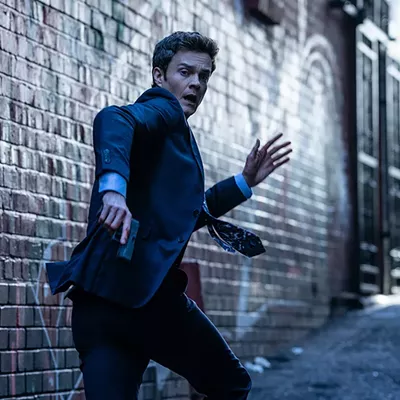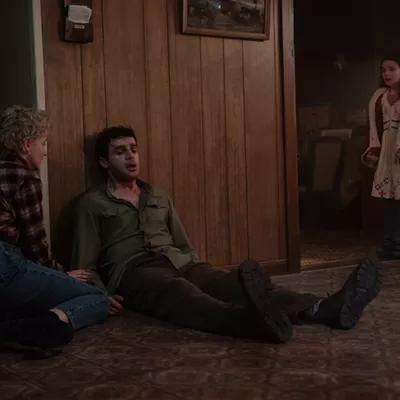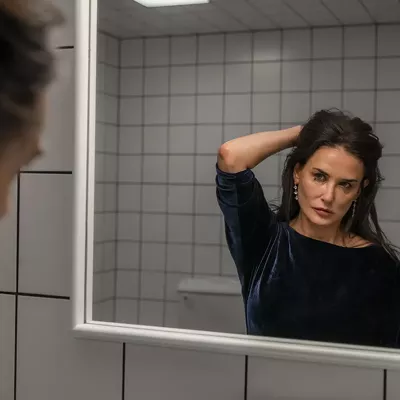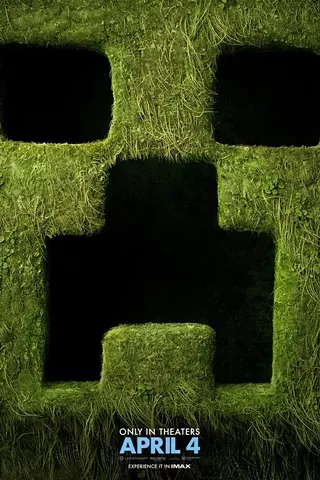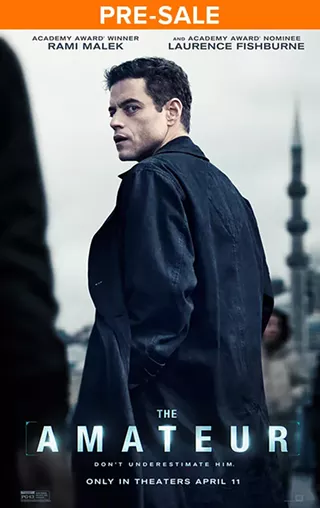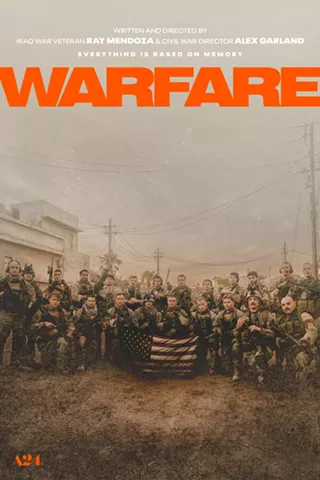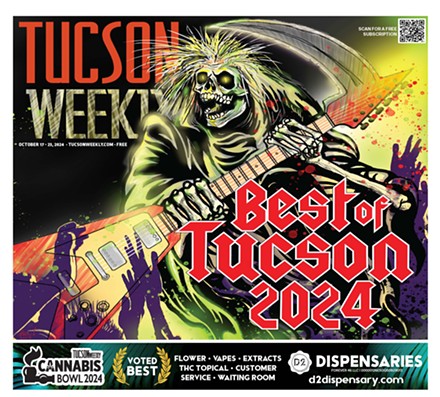Bubble is essentially a cinematographer's film. There's almost no story; there are long pauses between lines of dialogue; and in many segments, virtually nothing occurs. The film, though, is shot in a beautiful widescreen with stationary cameras that frame the Midwestern interiors with an eerie emptiness.
The style of the film is deeply voyeuristic. It follows, usually at a distance, three people who work in a doll factory. Soderbergh consistently uses a still camera and very few edits, creating the feeling that the characters just happened to walk into the room where the camera was sitting. Some scenes hold a single shot without cuts for several minutes, a real rarity in modern filmmaking.
In one segment, Kyle (Dustin James Ashley) and his friend Martha (Debbie Doebereiner) are at a doughnut shop, and Kyle stands up so that a hanging plant blocks the view of his head. The scene continues like this, with Martha speaking to what looks like a man with a plant for a head.
In another scene, Martha and Kyle talk through a small window, and though this is one of the few scenes where the camera cuts back and forth between speakers, you never see their mouths. It's a weird and alienating effect, and it's the only sequence shot in tight close-up.
The distance and alienation that the camerawork produces feed neatly into the plot, or what little plot there is: Martha and Kyle are friends because they both work in a doll factory. Martha is a middle-aged woman who likes to sew and watch television. Kyle is a young man who is pathologically shy. When attractive young Rose (Misty Dawn Wilkins) comes to work at the factory, she disrupts the simple connection that Martha has made with Kyle, and things very, very slowly get out of hand.
The film takes about 40 minutes to get to its only event, which is just about right. The visuals are so perfectly captivating that it doesn't need any story up to that point, but I don't think it would have worked to hold out on plot for much longer.
When something does happen, it happens on a night when Rose and Kyle go on a date, leaving Martha to baby-sit Rose's daughter. The date sequence is chilling as Kyle and Rose sit in a bar and have an incredibly slow conversation that reeks of romantic tension and despair.
To pull this off, Soderbergh used first-time actors who give performances that are weird, stilted and yet perfectly in sync with each other. They don't follow acting-school rules for naturalism, yet they come off as completely natural in their discomfort.
Soderbergh has clearly thought about the way every aspect of his film contributes to its overall mood. With Bubble, his intention was clearly to give the camera the starring role. That may well be why the film is set in a doll factory: The shots of the doll-production line are reminiscent of the industrial art films of the '60s and '70s, with shots of conveyer belts of doll torsos drifting by, doll-head molds being dipped in hot plastic and eerie shots of eyes being inserted into rubbery doll faces.
To enhance the blankness of these surroundings, most scenes are shot without any music. Only a hollow room tone rings across the dialogue, creating the feeling that the viewer is illicitly eavesdropping on the characters. Soderbergh maintains this style to the end, when the credits roll to complete silence, which is so unusual that it seemed somehow wrong and disturbing, and really emphasized the empty feeling of the film.
The only problem with this approach is that the story becomes so barren that it doesn't have much lasting effect. So little happens, and there's so little interior exploration of the characters, that ultimately the plot almost seems to disappear.
The film in this regard, and in the way it's shot, is most reminiscent of Antonioni's Italian language films from the '60s. It would be interesting to watch Bubble and a film like Antonioni's L'Eclisse in one night and compare the styles.
And, strangely, you'll be able to do that next week, when Bubble comes out on DVD. In an experiment in distribution, Soderbergh is releasing Bubble in theaters, on DVD, over the Internet and on cable almost simultaneously, claiming this will be the new, standard model for film releases.
But there's something sly about choosing Bubble as the first film to appear this way. While it's a captivating film, and one I'd see again, it's also a film that demands a large screen, and its quiet spaciousness seems far better suited to a dark movie theater than a home living room.




